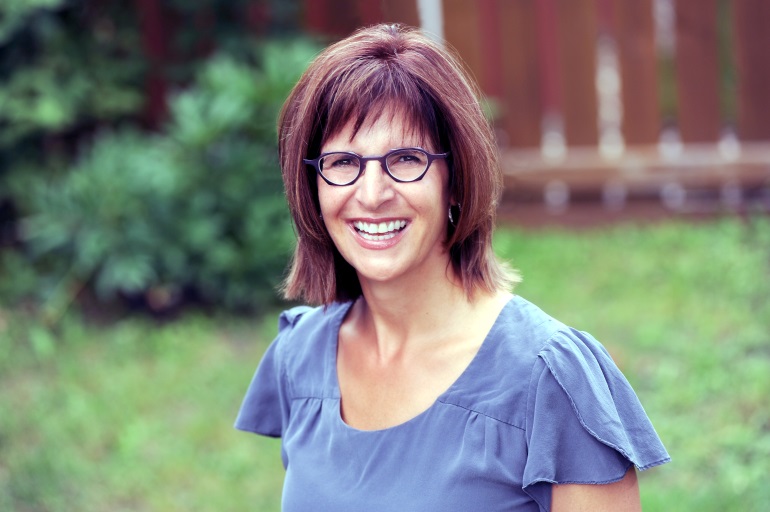A new book by Brandon University professor Dr. Alison Marshall is the first of its kind: “Bayanihan and Belonging” explores the experience of Filipino people in Canada
The book pays special attention to the importance of religion and belief as well as migration.
“Filipinos make up one of the largest immigrant groups in Canada, and the majority continue to retain their Roman Catholic faith long after migrating,” Dr. Marshall says. “Drawing on archival and ethnographic research in Canada and the Philippines from 1880 to 2017, my book aims to understand the role of religion within present-day Filipino Canadian communities.”
Drawing on extensive research among the Filipino community in Canada, Dr. Marshall’s new book details how many Filipino people who migrated to Canada continue to define themselves religiously.
“Religious belief is often manifested through public and private devotion and practices and through affiliations to certain churches, deities, saints, groups, and festivals,” Dr. Marshall says. “I also pay particular attention to what we call the religious underside — the beliefs and practices that are often hidden. These might be a special coin conferring blessings and protection that is buried deep in a pocket.”
“In Canada, Santo Nino devotion remains strong, both at church and beyond it,” Dr. Marshall says. “Along with Catholicism, this has provided Filipinos with a nationalist spiritual identity that has enabled them to live apart from kin.”
“Bayanihan and Belonging” puts a focus on Winnipeg, which is home to Canada’s oldest and largest Filipino-Canadian community, and showcases current church-based and domestic religious routines of migrant Filipinos. From St. Edward the Confessor Church, the principal site of worship for Filipino Catholics in Manitoba, to home chapels, and healing traditions, Marshall explores the day-to-day celebrations of bayanihan, or communal spirit. Drawing on experiences from Manitoba’s Filipino population, the book reveals that religious practice fulfills not only a need for spiritual guidance but also for community.
The book quotes Mike Pagtakhan, a Winnipeg City Councillor and nephew of Dr. Rey Pagtakhan, a former MP who was the first elected Canadian Filipino and who is also featured in the book.
Mike explains that so many Filipinos came to Winnipeg because they felt like they belonged, or because of Bayanihan.
“Winnipeg was the place to be, despite the fact that it's cold. I think that there were lots of jobs for people, at the same time housing was affordable, and the whole notion of the community being close got spread back home,” he said. “And so when people heard that, my theory (is) that they just said, ‘Well, let's go to Winnipeg. It’s great ’cause it feels like the Philippines,’ even though you're not in the Philippines. Despite the fact that it's cold, despite the fact that it's a different culture, it just feels like you're back in the Philippines.”
With a large Filipino-Manitoban population outside of Winnipeg as well, Dr. Marshall wrote an entire chapter on Brandon.
“I talk about a former BU professor and librarian who are both Filipino, as well as the Filipino experience in Neepawa and the rest of Manitoba,” Dr. Marshall said. “Communities such as Steinbach, Notre Dame de Lourdes, Morden, Carmen, Dauphin, Clear Lake, Carberry and Selkirk are all mentioned in my book.”
“The movement of people to new places, carrying with them their cultures and religions, is one of the great stories of human history, and this movement is becoming increasingly common as transportation technology eases global migration,” Dr. Tryphonopoulos said. “As Dr. Marshall has previously done with her research into the early Chinese-Canadian community, her current work is an important investigation into the Filipino-Canadian experience that brings a particular focus on Manitoba, on Westman and on Brandon.
“It is thanks to Dr. Marshall’s dedication, insight and sensitivity that these local immigration experiences are being placed alongside others on the national stage, where they are given the attention and profile they deserve.”
Dr. Marshall says she is hoping to re-connect with some of the people who were featured in the book so she can share the final work with them.
“Some people have moved or changed email addresses and telephone numbers so I have not been able to let them know,” she says. “I am eager to share the book with them, and hope they reach out and contact me so that we can arrange a way to pick up a free copy.”
 Dr. Alison Marshall
Dr. Alison Marshall
Latest in Local News
Latest stories on DiscoverWestman
- Events
- Jobs
Events
-
Assiniboine Branch of the UELAC will hold their AGM [7 pm] followed by a regular Meeting [8 pm]
Mon, Apr 15, 7:00 PM
-
April 20th - Holland Lions Club Chase the Ace $43751.90 and counting
Tue, Apr 16, 8:26 AM
-
Wellness Retreat for Cancer Survivors & Thrivers
Tue, Apr 16, 1:26 PM
-
April 20th - Holland Lions Club Chase the Ace $43751.90 and counting
Wed, Apr 17, 8:26 AM
-
Step 2
Wed, Apr 17, 10:00 AM
-
Equipment Technician or Apprentice
Full-time, Agriculture, Skilled Trades
Featured
-
School Administrative Assistant, Sanford Collegiate
Full-time, Education
-
Clearing & Payments Administrator
Term, Finance
-
Farm Production Assistant
Agriculture, Full-time
-
Heavy Duty Mechanic
Transport, Skilled Trades, Professionals



